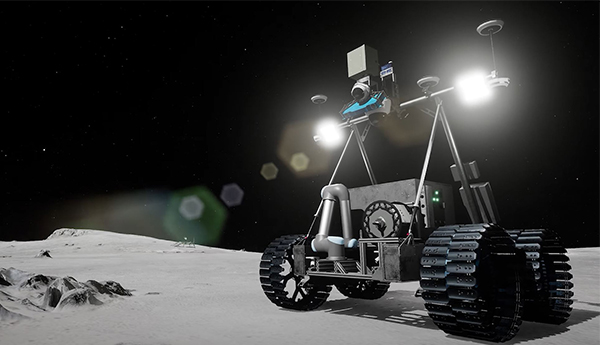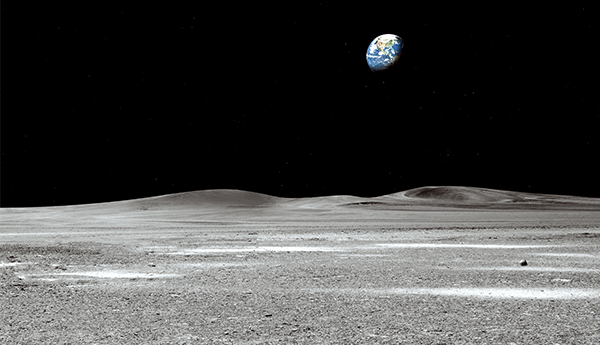Reaching new frontiers in space exploration

We’re boldly going where Canada hasn’t gone before.
For the first time in history, a Canadian rover will be sent to the Moon, and this pivotal space trek is happening with the support of Public Services and Procurement Canada (PSPC).
Following a competitive process, in November 2022, PSPC awarded a $43-million contract to Ontario-based Canadensys Aerospace Corporation for the design, development and manufacture of a lunar rover and its scientific instruments, on behalf of the Canadian Space Agency (CSA).
The plan is to send the rover to explore the Moon’s south polar region no later than 2026, as part of a joint initiative between the CSA and the National Aeronautics and Space Administration (NASA).
The rover’s mission

Rovers act like scientists’ eyes and hands in space: they gather data onsite and send it back to Earth. The Canadian rover will carry 6 scientific instruments, 5 Canadian and 1 American, to record images and measurements of the lunar environment. For example, it will search for water ice in the soil, which is key to the future of human space exploration.
While navigating the Moon’s surface, the Canadian rover will also put new technology to the test. For one thing, the rover and its equipment will need to survive a night on the Moon, which lasts about 14 Earth days, with temperatures that can go below -180 Celsius.
Procuring a lunar rover: Not your average shopping trip
The lunar rover procurement was a joint endeavour. While the CSA defined the requirements, PSPC provided guidance on developing the procurement strategy. PSPC has a procurement team specializing in space projects, and their knowledge about the sector was very valuable. “We had best practices to draw on from experience,” says PSPC team member Emidio Almeida.
The procurement strategy put in place ensured that a variety of rover concepts would be tabled. Canadian suppliers were first invited to submit basic design ideas for the rover, and 2 bidders were then selected to compete for the contract by expanding on their design ideas.
Bidders could increase their chances of success by collaborating on the project with at least 2 small or medium-sized companies, as the federal government strives to leverage its contracting opportunities to help smaller businesses grow and thrive. There was also an emphasis on involving researchers from Canadian academic institutions and offering career development opportunities for Canadian university students who could participate in the science, technology, engineering and math (STEM) activities related to the rover development.
Some aspects of this procurement process were unusual even by space sector standards. With NASA providing one of the scientific instruments and integrating the rover into its program, there was a unique agreement between the CSA and NASA to take into account.
Moreover, given the technical requirements associated with the contract, early engagement with stakeholders and suppliers was critical. PSPC team member Sameer Ali Abbasi says: “It helped to know from our supplier outreach efforts and prior support for the Lunar Exploration Accelerator Program that there would be qualified Canadian firms to compete for the work.”
Moving forward, PSPC will manage the contract with Canadensys and make any necessary adjustments. “When you’re dealing with product development, there can be tweaks to the requirements,” Almeida says. “Also, as key contract milestones are met, we’ll provide formal approvals, in consultation with the CSA, for the firm to proceed to the next contract phases.”
Countdown to the launch
PSPC is honoured to support the CSA and looks forward to the historic 2026 launch of the rover. “We contribute to many projects of significance, but this one truly has special meaning for Canada,” says Abbasi.

The development of the rover will support humanity’s quest to travel onwards from the Moon to Mars. Here on Earth, it will strengthen Canada’s reputation as a leader in the space industry and foster high-quality Canadian jobs and Canada’s economy in many domains.
Find out more about the first Canadian rover to explore the Moon and watch the video explaining how Canada is designing a rover for Moon exploration. To see other articles about interesting PSPC people and projects, check out Our stories.
Page details
- Date modified: